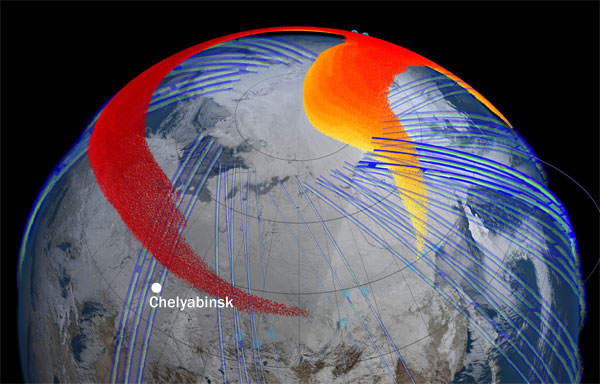Weekly Science Picks

It’s that time of the week again. Time for some science-y goodness from around the globe!!
NASA Spitzer Telescope celebrates 10 years in space!
Ten years ago the Spitzer Space Telescope was launched about a Delta II rocket from Canaveral, Florida. Spitzer is an infrared telescope and is the fourth of the NASA’s four Great Observatories in space, Hubble, Chandra, Compton and Spitzer.
Precision atomic clock sets new record
The most precise clocks in the world have been built in the US. Two clocks made from ytterbium (serioulsy I’ve not heard of this element before!) and could be used for technological advancements beyond timekeeping, such as navigation systems, magnetic fields and temperature. Apparently the clocks’ ticking rate varies less than two parts in one quintillion, or 10 times better than any other atomic clock. Sounds great! But does it stop me being late for work?
NASA prepares for LADEE launch
The Lunar Atmosphere and Dust Environment Explorer (LADEE) is a robotic mission that will orbit the moon to gather detailed information about the structure and composition of the thin lunar atmosphere and determine whether dust is being lofted into the lunar sky. LADEE will help us better understand the moon, and other objects including asteroids and other planetary moons.
Want to boost your testosterone level? Try chopping wood…
A new study by the Institute of Social, Behavioural and Economic Research at the University of California, Santa Barbara has found that chopping wood to clear land and feed the family produces more testosterone in men than competitive activities like sport.
Plankton may spread oyster herpes virus
Plankton may be spreading a herpes-like virus that has been devastating Pacific oyster farms in countries ranging from France, UK, Spain and the US.
Bacteria can cause pain on their own
Bacteria can directly trigger the nerves that sense pain, suggesting that the body’s own immune reaction is not always to blame for the extra tenderness of an infected wound.
Map tracks path of dust plume from Russian Chelyabinsk meteor
Watch this video that shows the dust path left behind the 11,000-metric-ton meteor as it ripped through Earth’s atmosphere on February 15, 2013.
Harnett S (2013-08-25 00:03:48). Weekly Science Picks. Australian Science. Retrieved: Jul 13, 2025, from https://ozscience.com/news/weekly-science-picks-43/
 Follow
Follow